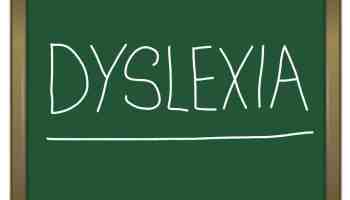
Developmental Verbal Dyspraxia (DVD) is used in Ireland and the UK to describe the same condition referred to in the USA as developmental apraxia of speech (DAS) or childhood apraxia of speech (CAS).
Speech and language therapists are the appropriate professionals to assess a child’s speech and language skills and to diagnose verbal dyspraxia, where appropriate. Some children may have other overlapping neurodevelopmental disorders including Dyspraxia/DCD.
According to the DSM-5 (2013:44) Verbal Dyspraxia is a term used for speech production problems and is included in the DSM-5 Communication Disorders section as “Speech Sound Disorder”.
DVD is essentially an expressive language disorder where it may be difficult to understand what the student is trying to say. In severe cases the student’s speech may be unintelligible. The student with DVD frequently struggles to produce words or sounds, and facial distortions may accompany his/her struggle to produce targeted sounds. The student may have a limited range of consonant and vowel sounds. Speech may be slow and lacking in normal phrasing and intonation, and as a result the student’s speech may sound very flat and what he/she is communicating may not sound very interesting, with the result that the student may not communicate what was intended.
The student with DVD often has difficulty producing on request the speech sounds and phrases he/she is capable of producing in spontaneous speech. Students may have problems with modulating speech volume (too loud/too quiet). Students frequently communicate using short simple sentence structures. Students may be slow to initiate communication and may be reluctant to communicate verbally, particularly in group situations. Some students appear expressionless and in addition may have difficulties interpreting facial and body language. DVD may impact on a student’s willingness to interact with peers, which has an impact on the development of age appropriate social skills.
Students may present with limited concentration and attention in school. Students may also have problems following directions and instructions, acquiring vocabulary and learning grammar. Difficulties are likely to be experienced with the acquisition of reading skills, particularly in the initial stages of learning, and the learning of spellings may also be affected, with speech distortions impacting on the student’s production of required sound sequences. These difficulties undermine the student’s writing ability. Furthermore, difficulties in organising and sequencing expressive language to express thoughts and ideas will impact on the ability to write longer passages, and this will have significant consequences at post-primary level.
Diagnostic criteria for “Speech Sound Disorder” (DSM-5, 2013:44)
A. Persistent difficulty with speech sound production that interferes with speech intelligibility or prevents verbal communication of messages.
B. The disturbance causes limitations in effective communication that interfere in social communication, academic achievement or occupational performance, individually or in any combination.
C. Onset of symptoms is in the early developmental period.
D. The difficulties are not attributable to congenital or acquired conditions, such as Cerebral Palsy, cleft palate, deafness or hearing loss, traumatic brain injury or other medical or neurological conditions.
General Strategies to Support Students with Developmental Verbal Dyspraxia (DVD)
- Reduce your rate of speech
- Encourage the student to reduce his/her rate of speech
- Provide clear models for sound production
- Encourage students to participate with peers in activities
- Encourage students to initiate conversations
- Allow additional response time
- Try not to ask for repetitions. Instead identify for the student the portion of what he/she has said that you understand, ask the student to clarify the parts of the sentence you did not understand and encourage the student to do so in a slow, steady voice
- Remember that difficulties and frustrated behaviour may present if the student is asked to repeat something or is put on the spot
- Try not to complete sentences for the student
- Encourage the student to persevere with what he/she is trying to say
- Use visual cues where possible
- Use concrete materials in the implementation of the curriculum
- Home-school journals can be helpful as a means of communicating interests and experiences, particularly with younger students or students whose speech is particularly unintelligible
- Be consistent in the language you use (e.g. instructions, explanations etc.) and ensure the student is following what you are saying. Sometimes restate the instruction in a simpler manner
- Praise the student for effort
- Be aware that the student may need a break from oral activities
- School staffs need to know how to identify and support children with Verbal Dyspraxia or Speech Sound Communication Disorder, to plan collaboratively to effectively support the inclusion of students with this disorder
- Early intervention may greatly help to lessen the child’s difficulties
Interventions need to look at the individual child’s profile of strengths and needs and how barriers to learning can be effectively removed. Teachers need to accurately identify the child’s needs and to plan effective and achievable small step targets to support these needs. Special teaching is not needed but differentiation of difficult areas of the curriculum is recommended to ensure success.


